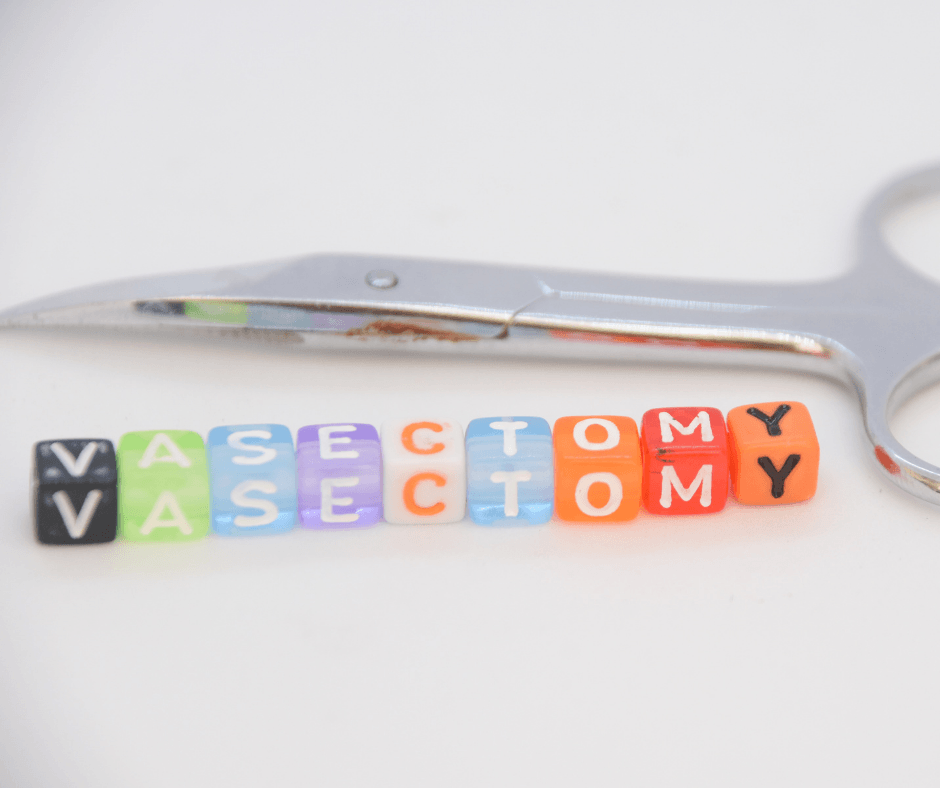There are several possible causes of male infertility. Most of these have been discussed in detail on this blog. These include OAT syndrome, DNA fragmentation and testicular torsion. However, there are also cases where infertility is deliberate. Some men have a vasectomy, which means they are no longer fertile. But what if, for example, you had a vasectomy in a previous relationship and now you want to have a baby with your new partner?
Today we are going to talk about what a vasectomy is and how it can be reversed if necessary.
Anatomy of the vas deferens
To better understand the process, a bit of anatomy first. The vas deferens, also known in medicine as the ductus deferens, carries sperm from the testicles to the urethra. In the scrotum, each of the two testicles has an epididymis, where the sperm are stored. Following this symmetry, there are also two vas deferens, which are the continuation of each epididymal duct. The vas deferens then enter the pelvis through the inguinal canal, pass through the vesical gland and finally open into the prostate and the urethra on either side. Along the way, other components of the sperm are added. Along the way, arteries and veins also attach to the vas deferens and together they form what is known as the spermatic duct.
What happens during a vasectomy?
Vasectomy is often used as a synonym for sterilisation. It is used for contraception, so sperm must be prevented from reaching the urethra. This is done by cutting the vas deferens on both sides. The incision is made closer to the beginning of the vas deferens so that it is still in the scrotum. A local anaesthetic is enough, so you don't have to take the risks of a general anaesthetic. Also, the operation is usually done as an outpatient, so you can go home afterwards.
You can have normal sexual intercourse after the vasectomy. Your semen will no longer contain sperm, but only the rest of the fluid. This fluid is produced by the seminal vesicles, the prostate and the glands in the urethra. These organs are located above the incision, so they still reach the penis. Sperm are still produced, but after ejaculation they are simply broken down by the body.
Although a vasectomy is not a very complicated procedure, it is still surgery. So you should give it some thought. You won't be able to have children afterwards. For this reason, most patients who have a vasectomy are over 30, in a committed relationship and already have one or more children.

Is refertilisation possible?
You had your reasons for having a vasectomy, but now you still want a child. Of course, the conditions are far from ideal, but there are still several ways to achieve your desire to have a child. However, you need to be aware that the quality of your sperm will suffer if you have a vasectomy. The longer the operation, the worse the quality will usually be. The risk of defects is therefore higher and you may have to pay more if you want to have your sperm tested.
Vasovasostomy
The first option you now have is a vasovasostomy. This involves sewing the ends of the vas deferens back together. Unfortunately, this procedure is not as simple as a vasectomy. It usually requires a general anaesthetic. Complete healing and function cannot be guaranteed, especially if the vasectomy was performed more than three years ago.
ICSI and IVF
If you do not want to undergo a second operation, the sperm can also be removed from the testicles via a puncture. These can then be used normally either for IVF or directly into the uterus. If you are worried that the sperm might be too badly damaged, you can have them examined beforehand, for example by having a spermiogram.
Cryopreservation
The term cryopreservation has also come up a lot on this blog. You can simply freeze genetic material in liquid nitrogen. Ideally, you will have done this before the vasectomy. This material can then be used for IVF without any problems. Of course, storage is not free.

«It is still possible to have children after a vasectomy. However, the longer it has been since the operation, the more difficult it will be.»
What is the difference between a vasectomy and a castration?
You probably know about castration from your pets. Don't worry, it's not done on humans. Unlike a vasectomy, it would damage the testicles. This would have several unwanted consequences. Because sperm production would stop, you would no longer be able to have an orgasm and your appearance would change. In this case, impotence does not only affect intercourse. In addition to sexual function, testosterone is also responsible for secondary sexual characteristics such as body hair or voice colour, and it also affects muscle growth. A vasectomy only cuts the vas deferens, which means that the testicles can continue to produce hormones. You will therefore be spared all the previous complications.
Where can you have these treatments?
The good news is that you don't have to travel abroad to have a vasectomy or vasovasostomy. As the procedure is usually carried out on an outpatient basis, you don't even have to go into hospital. If your current urologist doesn't perform vasectomies, he or she will be able to recommend someone who does.
What are the costs?
Of course, none of the above procedures are free. A vasectomy costs an average of 500 euros. If you want anaesthesia for the procedure, you can expect to pay more. As explained above, a vasovasostomy is a much more complex procedure. You should therefore expect to pay around 4,000 euros. If you want to freeze one or more sperm samples to be on the safe side, you will have to pay a one-off fee of around 500 euros. From then on, you will have to pay a further 300 euros a year for storage.
From both a financial and health point of view, a vasectomy is a treatment you should consider carefully. Even if the operation sounds uncomplicated, there is always a risk that the healing process could be disrupted in some way, for example by an infection. There is also the risk of anaesthesia. That's why it's best to get detailed advice from a urologist beforehand. You should also be clear about where you are in your family planning and what you and your partner want for the future. In general, surgery should never be a knee-jerk reaction; all parties should know what they are getting into. This also applies to refertilisation.
